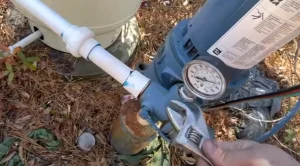The oil and gas industry plays a crucial role in global energy production. However, it is important to recognize that working in this industry comes with inherent risks and hazards. Understanding these potential dangers is essential for ensuring the safety and well-being of workers.
In this blog post, we will explore common hazards associated with working in oil and gas. By raising awareness and promoting proactive safety measures, we can help mitigate risks and create a safer working environment for those employed in this industry.
1. Chemical exposure
Chemical exposure is a major hazard in the oil and gas industry, where workers may encounter dangerous substances like hydrogen sulfide, benzene, and volatile organic compounds. Prolonged contact with these chemicals can lead to respiratory problems, skin irritation, chemical burns, and serious long-term health issues.
Ensuring worker safety is paramount, and education on potential risks and adherence to safety protocols, including the use of personal protective equipment (PPE), is essential. Additionally, the implementation of advanced oil and gas sensors can help detect and monitor hazardous substances, enabling early warning systems and prompt responses to mitigate the risks of chemical exposure.
2. Fire and explosions
The presence of flammable gases, liquids, and vapors in oil and gas facilities poses a constant risk of fires and explosions. Accidents can occur due to ignition sources, equipment failures, or improper handling of combustible materials. The consequences can be severe, leading to injuries, fatalities, and significant damage to infrastructure.
It is essential for workers to undergo thorough fire safety training, follow strict protocols for equipment maintenance, and be vigilant in identifying and addressing potential fire hazards. Adequate fire suppression systems, emergency response plans, and regular drills should also be in place to mitigate the risks associated with fires and explosions.
3. Falls
Working at heights is a common requirement in the oil and gas industry, whether on drilling rigs, offshore platforms, or elevated structures. Falls from elevated platforms, slippery surfaces, or unprotected edges can result in serious injuries or fatalities. Implementing comprehensive fall protection systems, such as guardrails, safety nets, and personal fall arrest systems, is crucial.
Workers must receive proper training in fall prevention, recognize potential fall hazards, and use appropriate safety equipment to minimize the risks associated with working at heights.
4. Machinery and equipment hazards
The oil and gas industry utilizes heavy machinery, equipment, and rotating parts that pose significant risks to workers. Improper use, lack of maintenance, or inadequate guarding measures can lead to accidents, including entanglement, crushing, and amputation.
Employers should prioritize regular equipment inspections, and maintenance, and provide comprehensive training on safe equipment operation. Workers must be aware of potential hazards associated with specific machinery, follow lockout/tagout procedures, and use protective measures such as machine guarding, safety interlocks, and personal protective equipment (PPE) to prevent injuries.
4. Confined spaces
Working in confined spaces, such as tanks, vessels, or pipelines, is another potential hazard in the oil and gas industry. These spaces often lack proper ventilation, have limited access points, and may contain toxic gases or inadequate oxygen levels. Workers entering confined spaces without appropriate training and safety precautions are at risk of asphyxiation, exposure to toxic substances, or engulfment.
Employers must implement strict protocols for confined space entry, conduct thorough atmospheric testing, provide adequate ventilation, and equip workers with appropriate PPE and rescue equipment. Regular training and hazard assessments are vital to minimize the risks associated with confined space work.
5. Transportation hazards
Transporting oil, gas, and related products involves inherent risks. Accidents during transportation, whether by pipeline, tanker trucks, or vessels, can lead to spills, explosions, or other catastrophic incidents, posing threats to the environment and human life. Employers should ensure proper training for drivers and operators, implement strict maintenance schedules for vehicles and equipment, and adhere to transportation safety regulations.
Comprehensive emergency response plans and spill containment strategies must be in place to minimize the impact of transportation-related accidents. Regular safety audits and inspections should be conducted to identify and address potential hazards in the transportation process.
6. Noise exposure
Excessive noise levels are a common hazard in various oil and gas operations, such as drilling, extraction, and processing activities. Prolonged exposure to high noise levels can result in permanent hearing loss and other auditory disorders. Employers must conduct noise assessments, implement engineering controls to reduce noise levels, and provide workers with appropriate hearing protection.
Regular audiometric testing should be conducted to monitor workers’ hearing health and ensure that protective measures are effective. Furthermore, awareness campaigns and training on the proper use of hearing protection should be conducted to minimize the risks associated with noise exposure.
7. Musculoskeletal injuries
The physically demanding nature of tasks in the oil and gas industry can lead to musculoskeletal injuries. Lifting heavy equipment, performing repetitive motions, and working in awkward positions can strain muscles, tendons, and joints. Employers should prioritize ergonomic practices, provide proper training on safe lifting techniques, and ensure that workers have access to mechanical aids or assistance when necessary.
Regular breaks, stretching exercises, and job rotation can help reduce the risk of musculoskeletal injuries. Creating a culture of safety and encouraging workers to report any discomfort or pain early on is crucial for preventing long-term musculoskeletal issues.
Conclusion:
Working in the oil and gas industry presents numerous hazards that can impact the safety and well-being of workers. By understanding and addressing these potential dangers, employers can create a safer working environment.
Comprehensive training, strict adherence to safety protocols, and ongoing hazard assessments are essential to mitigate risks and ensure the health and welfare of those employed in this industry.







